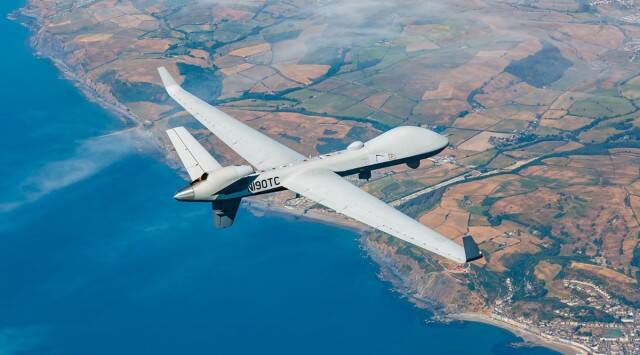After doing a detailed operations research system analysis (ORSA), the Indian armed forces have cut the number of US MQ-9B Predator high altitude long endurance (HALE) armed drones they want to buy from 30 to 18. They have also told the Narendra Modi government that they need these 18 platforms.
Instead of each of the three service wings getting 10 Predator drones, the new plan is for the Indian Army, Navy, and Air Force to each get six platforms to meet their own needs. After the government gives its approval, the deal will be made with the US government.
Even though the government is in constant contact with the company that makes the Predator, General Atomics, the need for a top-of-the-line proven armed drone was felt because the PLA is constantly upgrading and cementing military infrastructure along the 3488 km Line of Actual Control (LAC) and has a developed armed drone capacity. Even worse, China is giving its ally state Pakistan the same armed drone, the Wing Loong II.
The Indian Navy already has two General Atomics drones for surveillance that are not armed. The lease on these two drones is set to end in 2024. The two Sea Guardian drones are based at the Rajali Naval base in Tamil Nadu. From Aden, off the coast of Africa, to the Lombok straits in Indonesia, they have gathered a lot of useful data and information about the sea.
India needs a hunter-killer drone like the Predator because it only has drones that can fly for a long time at a medium height but can’t shoot anything. The Predator can carry four Hell-Fire air-to-ground missiles and two precision-guided rounds to take out high-value targets.
Aside from being able to carry weapons, the drone has top-of-the-line radar surveillance and can tell leaders on the ground about unilateral moves by China or Pakistan on the border in real time. With President Xi Jinping in middle-kingdom imperial mode against the QUAD, the same drone can be used to force various Indian Navy capabilities in the Indo-Pacific to counter the growing Chinese Navy threat.
The changing of 32 places in Arunachal Pradesh after the 2017 Doklam conflict, the incursions in East Ladakh in May 2020, and the naming of underwater features in the Indian Ocean all show that China is as aggressive as the British imperial Navy was in the 1800s.
China’s big picture of imperialism shows that Modi’s India needs to be ready for a military threat at any time, especially in the east. In this situation, India will be able to use weapons like Predator drones and traditional missiles to keep the enemy away.
